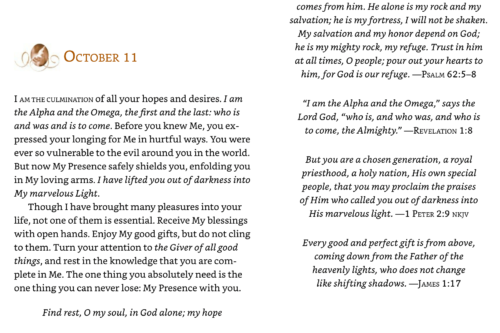Richard Rohr’s Daily Meditation
From the Center for Action and Contemplation

Contemplating Creation
Praise theLordfrom the earth,
Sea monsters and all deeps;
Fire and hail, snow and clouds;
Stormy wind, fulfilling God’s word;
Mountains and all hills;
Fruit trees and all cedars;
Beasts and all cattle;
Creeping things and winged fowl;
Let them praise the name of the Lord,
For God’s name alone is exalted;
God’s glory is above earth and heaven.
—Psalm 148: 7–10, 13
This week’s Daily Meditations focus on creation as a source of inspiration for contemplation and action. Fr. Richard shares about how “seeing” or perceiving God in nature forms the basis of an incarnational spirituality:
Creation spirituality has its origins in Hebrew Scriptures such as Psalms 104 and 148. It is a spirituality that is rooted, first of all, in nature, in experience, and in the world as it is. This rich Hebrew spirituality formed the mind and heart of Jesus of Nazareth.
Maybe we don’t feel the impact of that until we realize how many people think religion has to do with ideas and concepts and formulas from books. That’s how we were trained for years. We went away, not into a world of nature and silence and primal relationships, but into a world of books. Well, that’s not biblical spirituality, and that’s not where religion begins. It begins in observing “what is.” Paul says, “Ever since the creation of the world, the invisible essence of God and his everlasting power have been clearly seen by the mind’s understanding of created things” (Romans 1:20). We know God through the things that God has made. The first foundation of any true religious seeing is, quite simply, learning how to see and love what is. Contemplation is meeting reality in its most simple and direct form unjudged, unexplained, and uncontrolled!
If we don’t know how to love what’s right in front of us, then we don’t know how to see what is. So we must start with a stone! We move from the stone to the plant world and learn how to appreciate growing things and see God in them. In all of the natural world, we see the vestigia Dei, which means the fingerprints or footprints of God.
Perhaps once we can see God in plants and animals, we might learn to see God in our neighbors. And then we might learn to love the world. And then when all of that loving has taken place, when all of that seeing has happened, when such people come to me and tell me they love Jesus, I’ll believe it! They’re capable of loving Jesus. The soul is prepared. The soul is freed, and it’s learned how to see and how to receive and how to move in and how to move out from itself. Such individuals might well understand how to love God.
The Dance of Life
Father Richard views Francis of Assisi (1182–1226) as a prime example of someone who discovered within himself the universal connectedness of creation. Francis addressed animals and nature as spiritual beings who are part of reality’s harmony. [1] Today, we share wisdom about tuning into creation’s harmony from Sherri Mitchell (Penobscot), an attorney and activist for environmental protection and human rights.
Every living thing has its own creation song, its own language, and its own story. In order to live harmoniously with the rest of creation, we must be willing to listen to and respect all of the harmonies that are moving around us. . . .
We must tune in to our ability to see beyond the physical reality that surrounds us, and awaken to the vast unseen world that exists. Then we can begin to see beyond sight and to hear beyond sound. We see the underlying structures that support our world, and life begins to take on new shape, new meaning. When we live as multisensory beings, we find that we are able to comprehend the language of every living thing. We hear the voices of the trees, and understand the buzzing of the bees. And we come to realize that it is the interwoven substance of these floating rhythms that holds us in delicate balance with all life. Then, our life and our place in creation begins to make sense in a whole new way. Our vision expands to see the overall order of our path, and our hearing tunes in to a whole new source of information. . . . When we merge our internal rhythms with the rhythms of creation, we develop grace in our movement, and without thought or effort we are able to slide into the perfectly choreographed dance of life.
I remember my first moment of conscious engagement with this dance. . . . It was a warm early-summer day and I was seated in a meditative state in my back yard. . . . As I was sitting there, I noticed a tiny ant crawling across a blade of grass. As I watched the ant move along, his little body began to light up. Then, the blade of grass that he was walking on lit up. As I sat there and watched, the entire area surrounding me began to light up. . . . I sat very still, quietly marveling over this newfound sight, afraid to move and lose it. . . . While I sat there breathing with the world around me, the firm lines of my being began to fade. I felt myself expanding and merging with all that I was observing. There was suddenly no separation between me, the ant, the grass, the trees, and the birds. We were breathing with one breath, beating with the pulse of one heart. I was consumed by this achingly beautiful and complete sense of kinship with the entire creation.
